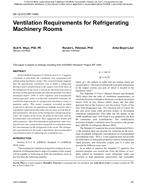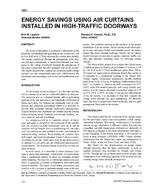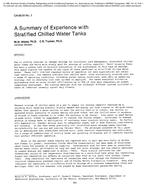Buildings housing research laboratories for the life sciences frequently devote a large percentage of their total space to laboratory animal storage. Environmental control specifications for these facilities usually reflect the need to hold the animals in carefully controlled environments prior to their experimental use. Lack of attention to the conditions in the storage facility may prejudice experimental results by exposing the animals to unintentional and unrecognized environmental stresses or to physiological conditioning cycles. Hence the required environmental condition must be carefully defined, the system must be properly designed, and precise measurement and monitoring of the environmental variables must be made. (General descriptions of laboratory storage facilities, environmental problems and environmental standards are given in Ref 1,2,3.)
The maintenance of proper environmental conditions in laboratory animal storage facilities basically involves control of dry bulb temperature, humidity, contaminants and odor. For a given storage situation the designer can determine the load on the environmental control system from knowledge of the condition desired in the facility, the facility construction, the number of animals, and the per unit animal contribution to sensible and latent heat, contaminant and odor load. This determination is generally made on the basis of maximum expected loading at steady state conditions.
Rather frequent, thorough cleaning of animal facilities, however; requires periodic introduction of large amounts of cleaning water into the space. Residual water from the cleaning process must be disposed of by the environmental control system. Although sometimes neglected, consideration of the influence of this water on the environmental condition of the space and on equipment specification is an additional design requirement, above steady-state requirements. During the design phase, provision must also be made for auxiliary equipment to compensate for the transient cleaning water load if it is judged intolerable in a particular situation. Both the duration of the transient and the temperature and humidity levels in the space resulting from cleaning water residue are important considerations. The study described below had as its intent to provide initial information concerning these questions.
Citation: ASHRAE Transactions, Volume 80, Part 1, Los Angeles, CA
Product Details
- Published:
- 1974
- Number of Pages:
- 16
- File Size:
- 1 file , 870 KB
- Product Code(s):
- D-LA-2294


